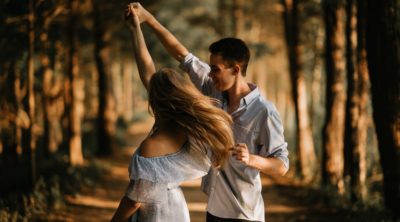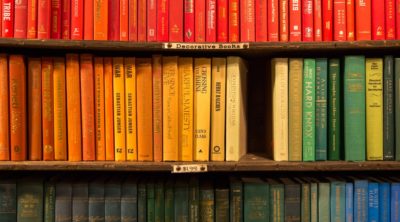
Are you looking for imagery examples that illustrate this oft wielded literary style? Then you have landed on the right page. Here I explain what imagery is all about and share some examples from literature.
Imagery is one of the most powerful ways of expressing oneself. It is also the most appealing way of conveying a writer’s or a poet’s feelings. In this article, I introduce you to the concept of imagery in literature and acquaint you with this style of expression, which you are already familiar with. The examples that I present, serve to illustrate the usage of this literary style.
What is Imagery in Literature?
We experience the world through our five senses of sight, sound, smell, touch and taste. Expressing these sensory experiences through words is using imagery as a literary tool. Though the word imagery itself might hint that imagery is confined to description of images in the mind’s eye, it is not restrictive. Imagery is used by writers and poets to invoke these sensory impressions in the mind of the reader. It is a very effective style of writing which reaches out to the reader more easily. Imagery may be auditory, somatosensory (tactile), olfactory, visual and even gustatory. Through this powerful tool, a writer can involve the reader in an experience conveyed by the write-up, instead of telling him what’s happening. It’s like painting an experience on the mind canvas of a reader, by appealing to his own sensory experiences. It makes writing come alive and move beyond pure semantics.
Examples of Imagery
Examples of imagery in literature abound in every language. It gets the point across through an effective analogy, that conveys the gist of what a writer wants to say or feels. Examples for kids can be found in most nursery rhymes. If you start looking for examples of imagery in literature, you will find many. Read the nature poets like William Wordsworth or the philosophical yet rousing poetry of Alfred Lord Tennyson. You will find imagery in almost every poem. Here are some examples from poetry and prose.
In Prose
Let us have a look at some of the examples of imagery in prose. Here are some.
- He fumed and charged like an angry bull.
- He fell down like an old tree falling down in a storm.
- The taste of that first defeat was bitter indeed.
- He felt like the flowers were waving him a hello.
- The eerie silence was shattered by her scream.
- After that first sale, his cash register never stopped ringing.
- The sky looked like the untouched canvas of an artist.
- He could hear his world crashing down when he heard the news about her.
- She was like a melody in flesh and blood.
- The F-16 swooped down like an eagle after its prey.
- The word spread like leaves in a storm.
- The lake was left shivering by the touch of morning wind.
- He lost his voice in the cacophony of conformity.
- Her face blossomed when she caught a glance of him.
- He could never escape from the iron grip of desire.
- He could hear the footsteps of doom nearing.
- The ants began their daily marching drill.
- She was like a breath of fresh air infusing life back into him.
- They fought like cats and dogs.
In Poetry
Let us have a look at imagery examples in poetry. I quote some poems rich with imagery. Here are a few of my favorites.
DAFFODILS
I wandered lonely as a cloud
That floats on high o’er vales and hills,
When all at once I saw a crowd,
A host, of golden daffodils;
Beside the lake, beneath the trees,
Fluttering and dancing in the breeze.
Continuous as the stars that shine
And twinkle on the Milky Way,
They stretch’d in never-ending line
Along the margin of a bay:
Ten thousand saw I at a glance,
Tossing their heads in sprightly dance.
The waves beside them danced; but they
Out-did the sparkling waves in glee:
A poet could not but be gay,
In such a jocund company:
I gazed — and gazed — but little thought
What wealth the show to me had brought:
For oft, when on my couch I lie
In vacant or in pensive mood,
They flash upon that inward eye
Which is the bliss of solitude;
And then my heart with pleasure fills,
And dances with the daffodils.
– William Wordsworth
SUMMER NIGHT
Now sleeps the crimson petal, now the white;
Nor waves the cypress in the palace walk;
Nor winks the gold fin in the porphyry font:
The firefly wakens: waken thou with me.
Now droops the milk-white peacock like a ghost,
And like a ghost she glimmers on to me.
Now lies the Earth all Danaë to the stars,
And all thy heart lies open unto me.
Now slides the silent meteor on, and leaves
A shining furrow, as thy thoughts in me.
Now folds the lily all her sweetness up,
And slips into the bosom of the lake
So fold thyself, my dearest, thou, and slip
Into my bosom and be lost in me.
– Alfred Tennyson
A MAGIC MOMENT I REMEMBER
A magic moment I remember:
I raised my eyes and you were there,
A fleeting vision, the quintessence
Of all that’s beautiful and rare.
I pray to mute despair and anguish,
To vain pursuits the world esteems,
Long did I near your soothing accents,
Long did your features haunt my dreams.
Time passed. A rebel storm-blast scattered
The reveries that once were mine
And I forgot your soothing accents,
Your features gracefully divine.
In dark days of enforced retirement
I gazed upon grey skies above
With no ideals to inspire me,
No one to cry for, live for, love.
Then came a moment of renaissance,
I looked up – you again are there,
A fleeting vision, the quintessence
Of all that`s beautiful and rare.
– Alexander Pushkin
These were some of the examples of imagery that demonstrate the beauty of this literary style. It makes reading a passage or a poem, a ‘real experience’.



